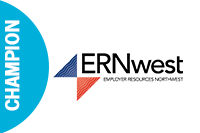Courtesy of GNSA
Even in this day of cloud-based software and automated employee management systems, many organizations still rely on manual time tracking and accounting. Or they’re using separate, non-integrated accounting systems for time tracking and payroll. Either way, the bottom line is this: There’s a much greater chance for costly errors of all sorts, from missing pay to penalties for inaccurate tax payments.
Did you know that …
- 22% of U.S. employees who are required to input their hours worked use a time card or time sheet [1]
- Nearly one in five payroll professionals (18%) spend much of their time on day-to-day activities, such as data entry [2]
- Manual data entry is also the payroll activity that results in the most errors (35%) [3]
- 25% of payroll inquiries are about employees’ pay slips [4]
- The second most common reason for payroll inquiries is related to missing pay, at 22% [5]
[expander_maker id=”1″ more=”Read more” less=”Read less”]
$4.96 billion
The amount of civil tax penalties the IRS levied against U.S. businesses for employment tax violations in 2014. [6]
FACT SHEET
Yes, getting payroll right is challenging. But studies prove that getting it wrong can cost you in more ways than you might have thought.
» New employees who would leave their jobs if their first paycheck was wrong — 82 million [7]
» U.S. workers and their families who live paycheck to paycheck — 58% [8]
» Employees who are less than certain that payroll withholding and the net amount of their paycheck are correct each payday — 11% [9]
» Employees who would find it difficult to meet current financial obligations if their next paycheck was delayed for a week — 67% [10]
» Average reduction in rate of payroll errors and time required for corrections with an automated system — 60%–80% [11]
Calculation example:
By reducing the average payroll error rate from 1.2% to 0.7%, you could reduce your payroll by $22,695 for every 100 employees, based on the average national weekly earnings rate ($907.82 average weekly earnings ˟ 50 weeks ˟ 100 FTE ˟ 0.5% payroll error rate difference). [13]
What could employee data visibility mean to you?
There’s no doubt about the pitfalls that come with relying on manual data entry, manual payroll processes, or manual reconciliation of separate automated systems for time tracking and payroll. You’re creating a healthy environment for greater risk of human error, lost productivity, and damage to employee engagement — all of which can have tangible costs to your business.
Top-performing companies, meanwhile, have an average payroll error rate of only 0.7 percent per pay period, compared with the peer average of 1.2 percent. [12] The right system can reduce errors and costs caused by payroll leaks, inefficient payroll software or manual processes, and compliance with labor and pay regulations, union regulations, and pay rules.
With GNSA’s workforce solution you can:
- Empower managers to manage by exception, reviewing and approving employee time daily, so pay accurately reflects employee time
- Proactively identify issues and collaborate with email alerts and robust workflows that flag issues to avoid the inevitable payroll problems
- Save time for managers and supervisors, so they can focus more on revenue-generating activities, such as customer service or production quality
Learn more: [gravityform id=”72″ title=”true” description=”true”]
1 American Payroll Association, 2015 Getting Paid in America (2015), at 14, from a selected summary of responses found at http://www.nationalpayrollweek.com/documents/NPW2015SurveyResults.pdf.
2 Mercer LLC, Virginia McMorrow, Mercer Payroll Benchmarking Survey 2015, Payroll Operations Country Survey United States (2016), at 15.
3 Ibid., at 15.
4 Ibid., at 39.
5 Ibid., at 39.
6 U.S. Internal Revenue Service, Internal Revenue Service Data Book, 2014, at 44, found at https://www.irs.gov/pub/irs-soi/14databk.pdf.
7 Kronos Incorporated, New Workforce Institute at Kronos Survey: Payroll Problems Affect 82 Million American Workers (March 27, 2017), found at https://www.kronos.com/about-us/newsroom new-workforce-institute-kronos-survey- payroll-problems-affect-82-million-american-workers.
8 Ibid.
9 American Payroll Association, 2015 Getting Paid in America (2015), at 1, from a selected summary of responses found at http://www.nationalpayrollweek.com/documents/NPW2015SurveyResults.pdf.
10 Ibid., at 6.
11 SMB Group, Cloud-based Workforce Management Powers Midsized Organizations (December 2015), at 6.
12 The Aberdeen Group, Workforce Management for the SMB: Big Results for Small and Medium Business (2014), at 4.
13 U.S. Department of Labor, Bureau of Labor Statistics, Economic News Release (Sept. 1, 2017), found at https://www.bls.gov/news. release/empsit.t19.htm.
14 Mollie Lombardi, Aptitude Index Report — Payroll Solutions, Aptitude Research Partners (June 2017), at 9.
[/expander_maker]






























